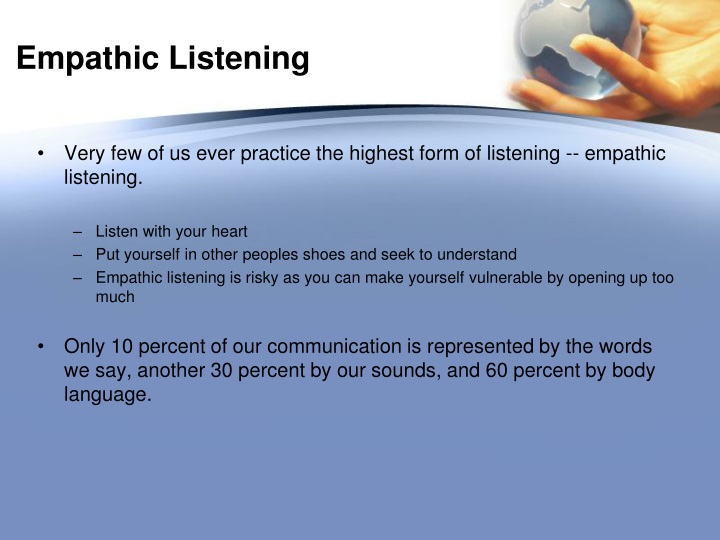

“We created a committee to examine these issues and recommend solutions.” “The Human Resources Team has partnered with the LiveLearn Foundation to provide a range of coping resources for staff.” Going beyond acknowledgment and care, expressions of action indicate that “I want to address the situation.” “I’m very concerned about staff burnout.” ActionĪction is typically not considered part of a classic empathic response, but leaders can convey empathy in their proposals for a solution. “Your safety in the field is our top priority.” “I care deeply about your ability to balance your work life and personal life.” Expressions of care indicate that “I am moved by the situation.” A leader certainly wants their teams to pay attention and care when they communicate - that expectation goes both ways. Leaders express empathy when they go beyond mere acknowledgment to express authentic feelings of care about how a challenge affects the team. “This has been a very challenging quarter for all of us.” Care “I recognize how this reorganization process can be stressful.” “I know and understand the widespread anxiety about the pandemic.” Expressions of acknowledgment indicate “I am now aware of the situation.” AcknowledgmentĮven if leaders are not in the mode of solving a challenge directly, they express empathy when they simply acknowledge the challenge and its impact on staff. Just remember that listening only works - as your kindergarten teacher may have told you - when the mouth is closed and the ears are open. Listening indicates that “I want to hear about the situation.” Sometimes just exhibiting an attentive presence can signal deep understanding and empathy.

The good news is that all leaders (even those who are not naturally empathic) can communicate messages of empathy as powerfully as they convey messages of unity and accountability.ĭuring challenging times, the most effective leadership communications are ones that deliver attention, acknowledge distress, demonstrate care, and - not necessarily at first, but eventually - take appropriate action to mitigate the situation or at least provide comfort, so, regardless of how empathic you are or think you are, focus on those four touchpoints in your communications: ListeningĪs a communication tool, listening is as essential as speaking, especially when it comes to empathy. So is a lack of natural empathy a showstopper when it comes to expressing and benefiting from empathic communications? No. If CEOs can step into a ministerial role - extending hands virtually, truly listening, relating to and connecting with people where they are - there is enormous potential to inspire people and strengthen bonds and loyalties within the company.”īut just as each of us has varying levels of empathy, not every leader is equally empathic. The pandemic and other stressful events over the past few years have only made empathic communications even more desirable and necessary, especially as those expressions have become more virtual - including videos, social media posts, and emails.Īs Paul Tufano, CEO of AmeriHealth Caritas, explains in a July 2020 McKinsey & Company article, “This has been a sustained period of uncertainty and fear, but also a great opportunity to forge a stronger, more cohesive, and more motivated workforce. We even sometimes reimagine “CEO” as “Chief Empathy Officer.” There’s no question that the ability to step into another’s shoes and understand their situation and challenges is a powerful trait that builds trust and faith. Most business consultants - and certainly most workers - agree that empathy is a critical leadership skill.


 0 kommentar(er)
0 kommentar(er)
